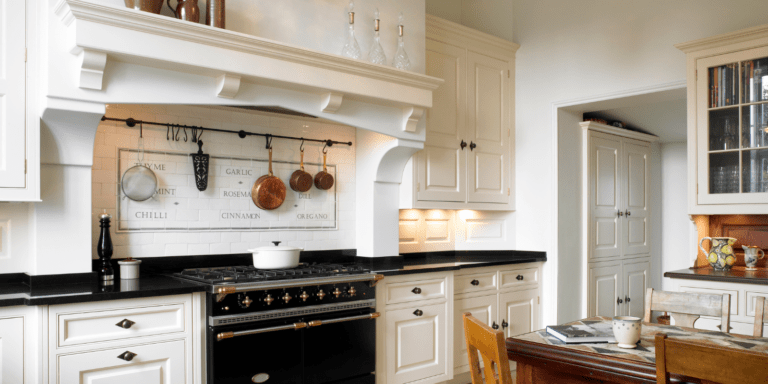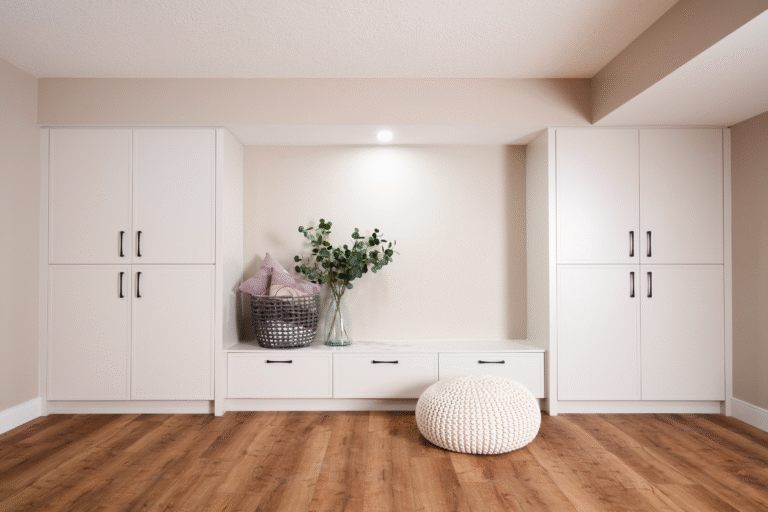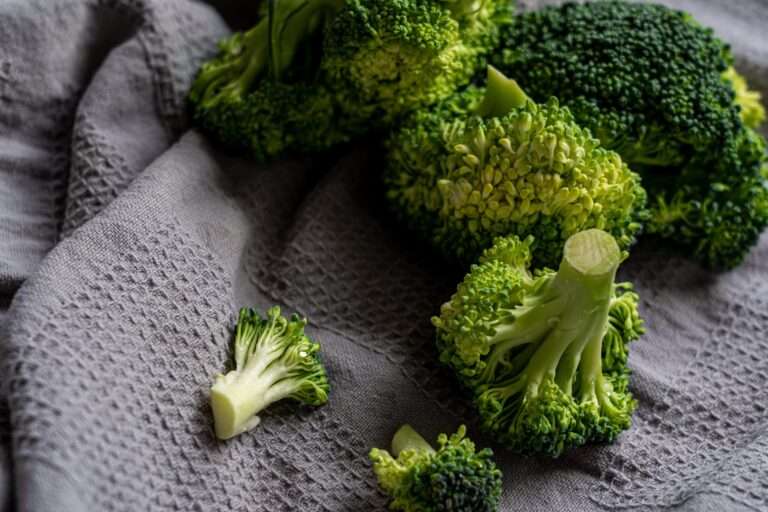Composting kitchen food scraps is one of the easiest ways to reduce waste and create nutrient-rich soil for gardening. Whether you live in an apartment or a house, learning to store and compost kitchen food scraps efficiently can contribute to a healthier environment.
In this guide, we’ll cover the essentials on what’s compostable, how to store scraps, and why composting food waste makes such a difference.
Does your city compost or pick up kitchen food scraps curbside?
Before starting to compost your kitchen food scraps, check if your local waste management offers a compost or organics pickup service. Many cities across North America now provide curbside compost collection, which accepts items like vegetable peelings, coffee grounds, eggshells, and other food scraps. For households with compost pickup, this option can save the hassle of backyard composting while still benefiting the environment.
If your city doesn’t offer a compost service, community composting might be available nearby. Local gardens or farms may welcome additional compostable material, and some even run community composting programs where residents can drop off their food scraps. You can start backyard composting or container composting if these options are not available.
Here’s a cheat sheet to backyard composting!
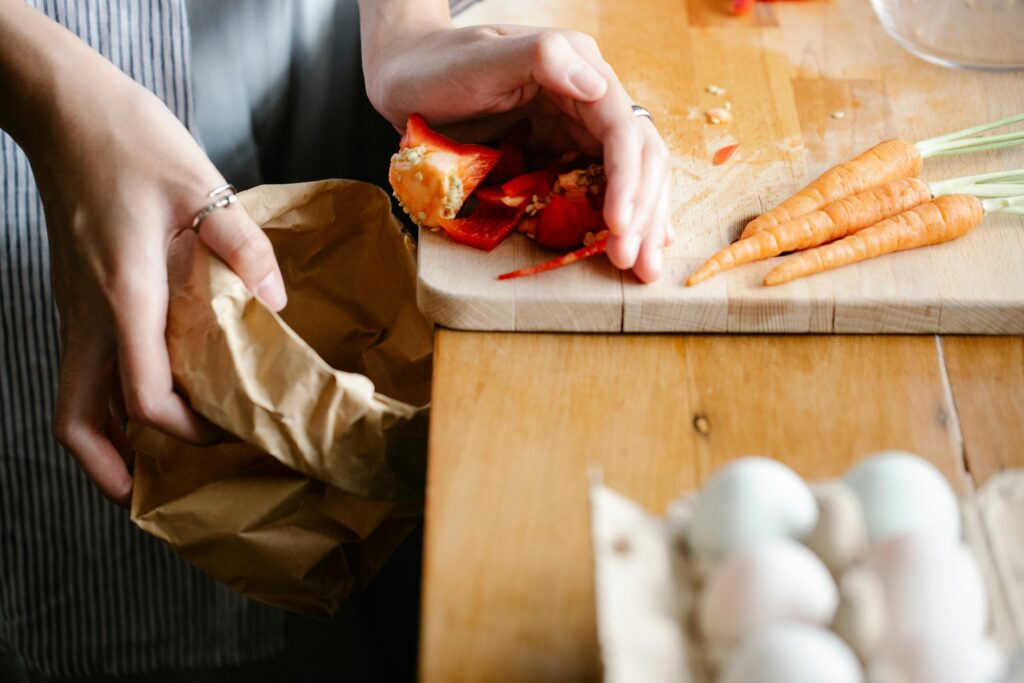
What Kitchen Food Scraps Are Compostable?
While almost all food waste is compostable, understanding what breaks down best can help you avoid issues like odors or pests. Here’s a list of the most commonly compostable kitchen scraps:
- Vegetable and fruit peels (banana peels, apple cores, carrot tops)
- Coffee grounds and filters
- Tea bags (check if they’re compostable)
- Eggshells
- Stale bread and grains
- Nut shells (except walnut shells)
Avoid composting meats, dairy, fats, and oily foods in most home compost setups, as these can attract pests and create unpleasant smells.
Here is an excellent resource for composting and what kitchen food scraps are compostable.
Where to store your kitchen food scraps
Keeping food scraps in your kitchen before transferring them to an outdoor compost or city bin is easy with the right container. Here are some simple and effective storage ideas for kitchen scraps:
- Countertop Bins: Compact, with a tight seal to trap odors, countertop bins are a practical solution for small spaces. Some come with charcoal filters that help contain smells.
- Freezer Bags or Containers: Freezing scraps is another excellent option, especially for those who may not empty their compost bin frequently. Freezing prevents odors and slows down decomposition, making it convenient for people with smaller compost setups.
- Under-Sink Containers: If you prefer not to have scraps on the counter, under-sink containers fit out of sight while keeping scraps accessible. Choose one with a lid to prevent unwanted smells from lingering.
- Custom Pull-out Compost Bin: A pull-out compost and recycle center can be added to your kitchen cabinets as a functional and stylish composting option.
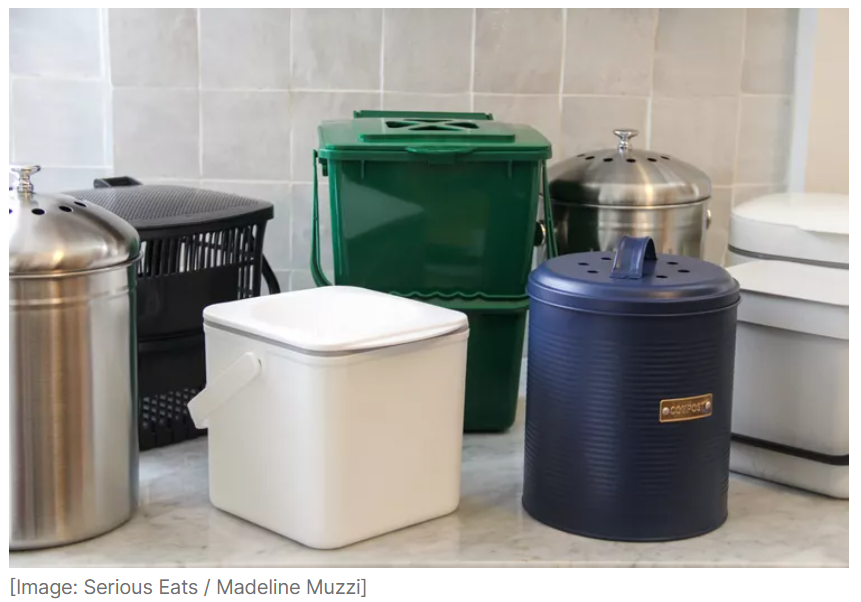
Compost Bin Ideas for Kitchen Food Scraps
Choosing the right bin makes composting easier and keeps your kitchen odor-free. Here are a few bin ideas that work well for kitchen scraps:
- Stainless Steel Bins: These are durable, easy to clean, and often come with a charcoal filter to control odors.
- Bamboo or Wood Bins: For a more sustainable and aesthetic option, bamboo or wood bins are sturdy and eco-friendly. Many are lined to make cleaning simple.
- Compostable Bag Liners: For those who want minimal cleaning, use a bin that accommodates compostable bag liners. These can often go straight into a city compost bin if they’re made from certified compostable materials.

Built-In Custom Compost and Recycling Stations
In modern kitchens, built-in compost and recycling stations are becoming a go-to solution for anyone aiming to streamline waste management while maintaining a clean, clutter-free space. These custom stations are designed to fit seamlessly within cabinetry, offering easy access without compromising the kitchen’s aesthetic. Built-in stations typically feature:
- Slide-Out Drawers: These drawers house bins dedicated to compost, recycling, and general waste. Located near prep areas, they make it easy to sort food scraps and recyclables as you cook.
- Dual-Bin Compartments: Many designs include separate, labeled compartments for composting and recycling, keeping everything organized and odor-free.
By integrating compost and recycling bins into your cabinets, you’re creating a kitchen that prioritizes sustainability and convenience. Whether remodeling or planning a new kitchen, built-in compost stations offer both style and function—an easy way to incorporate eco-friendly practices into daily life.
Why Composting Kitchen Food Scraps Matters
Composting food scraps not only reduces household waste but also brings numerous environmental benefits. According to the EPA, food waste is the single largest contributor to landfill content, where it releases methane, a greenhouse gas much more potent than carbon dioxide. By composting, you help divert food scraps from landfills, turning waste into valuable soil nutrients instead.
Using compost to enrich soil also reduces the need for chemical fertilizers and boosts soil health. This makes composting both an eco-friendly and practical choice, giving you the satisfaction of contributing positively to the environment while creating nutrient-rich soil for your garden or local green spaces.
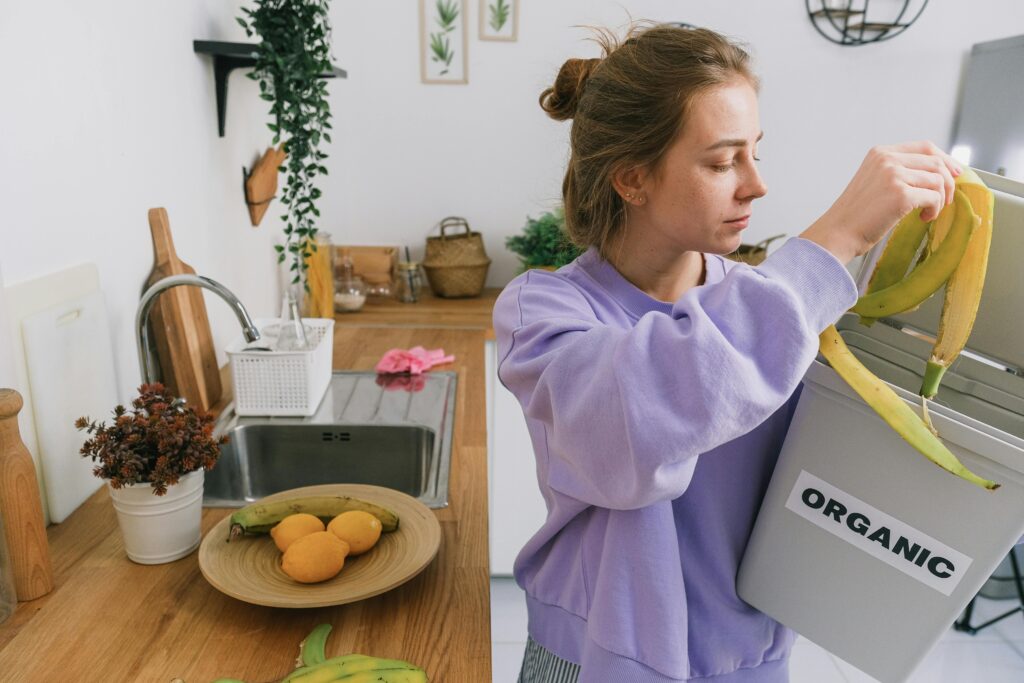
Ready to add compost to your kitchen routine?
Learning to compost kitchen food scraps can start with simple steps, like finding a convenient storage solution and understanding what can and can’t go into your compost. By exploring options like local compost pickup, or community programs, you can contribute to a healthier environment while reducing your waste footprint. Plus, with so many storage and bin options available, keeping your kitchen clean and odor-free while composting is easier than ever.



